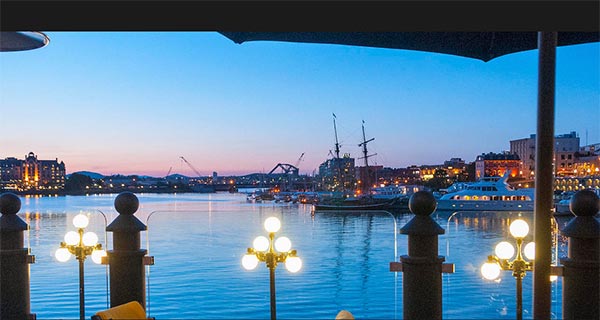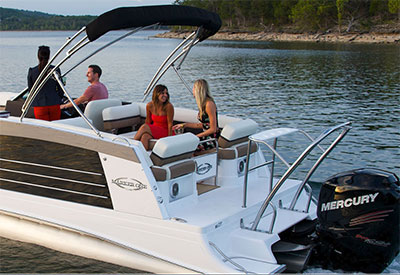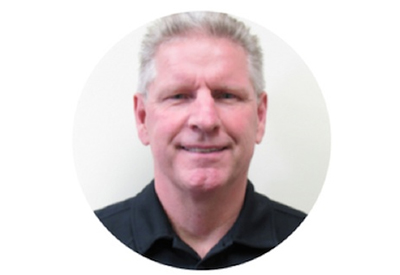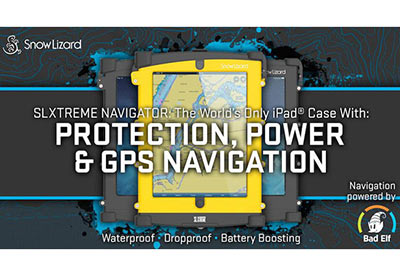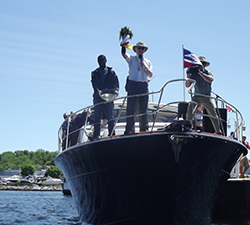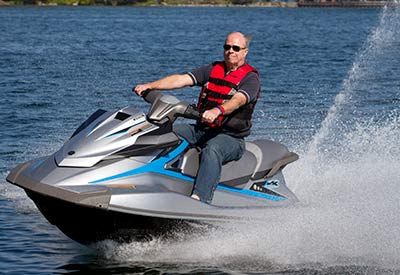Vern Burkhardt, Chair of the 2015 Swiftsure Race
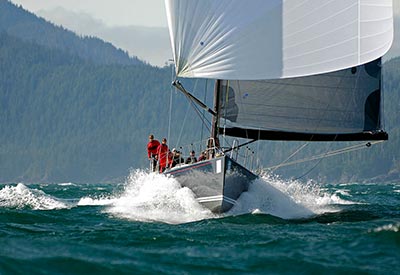
Bob Nicoll
What is Swiftsure?
The Swiftsure International Yacht Race is the premier annual yacht race in the Pacific Northwest with competitors coming from Oregon, Greater Seattle, Vancouver, Vancouver Island and beyond. It is a race for sailboats of all sizes and types and it significantly challenges the skills of sailors because of the changing wind conditions, challenging currents and the stiff competition.
Swiftsure is a festive community event with the sailboats that have entered the race showcased at the docks in front of the Fairmont Empress Hotel on Thursday and Friday, with food vendors along the waterfront and with bands playing from 8-11 pm on those same evenings. This year they have a new indoor venue, the Steamship Grill and Bar at 470 Belleville Street, right on the Inner Harbour. The venue is open to everyone. Saturday morning provides spectators an opportunity to see about 200 sailboats off Clover Point jockeying for a good start position. For sailors, Swiftsure is a must do race, the biggest challenge annually on the coast.
How was it started and how were the race routes determined?
The first recorded sailboat races in the Victoria area were in the late 1850’s, between boats of the royal navy and the early colonists. Interest in the sport grew in the following decades, and by 1930 a long distance race from Cadboro Bay west around the lightship on the Swiftsure Bank, at the entrance to the Juan de Fuca Strait and the back was proposed. There were six entrants! By 1960, Forty-five boats were entered in this now classic Lightship Race. However, in the following year, the Lightship was removed from service. This was a minor setback quickly filled by the Royal Canadian Navy and, since then, Swiftsure sailors race to round one of Her Majesty’s Canadian Ships Temporarily anchored at the same location.
In 1962, after the considerable grumbling by the skippers of boats that were to small to go to “the bank”, the Royal Victoria Yacht Club introduced a shorter race to Clallam Bay, some fifteen miles west of Port Angeles, and called the Juan de Fuca Race. like the granddaddy Lightship Classic, it to started with modest beginnings. In the first year of Juan de Fuco Race, there were but four entries: by 1969 this had risen to forty-nine boats.
With continued and increased participation, and faced with only two courses, one of 138 nautical miles and the other of 79 nautical miles, the race organizers and many skippers found themselves in a dilemma. The solution was the introduction in 1988 of the Cape Flattery Race. 102 nautical miles in length, halfway between the capitalized Swiftsure Bank and the Clallam Bay courses. This has proven to be a very popular race, attracting some the very largest boats and fastest boats, and the largest fleet of competitors.
New this year is the Hen Bank Race. it is 118.1 nautical miles and is designed to attract those who enjoy longer races, but don’t want to suffer the pounding of the north pacific. It will initially follow the same course as the Cape Flattery, but continue east to and ODAS buoy near HEIN Bank (near San Juan Island) when the Cape Flattery boats turn for Victoria. After rounding the ODAS buoy they will steer straight for Victoria.
Where are the best places to watch? And when?
The best place to watch the start is from Clover Point on Saturday morning. The first of five starts is at 9:00 AM, with the warning signal at 8:50 AM (each start is 10 minutes apart). The start will also be live streamed at http://2014.swiftsure.org. You can see much of the start anywhere along the waterfront from Clover Point to Ogden Point Breakwater. In fact the Inshore Race will be routed around the Brotchie Ledge, just off the breakwater. That will also be a good viewpoint.
What should people watch for?
People should watch for the strange jockeying and very close quarters that happens in yacht racing at the start. Because all the boats are already moving, and no one can cross the start line ahead of the start, the–
How do the crew stay alert so long?
It is exciting, cold, wet and they have lots of coffee. Most boats run a watch system so everyone gets a little sleep. But yes, fatigue is a factor and the skipper will watch for this and try to ensure no one becomes too sleep deprived. Mental preparation also plays a significant role in keeping alert and racing consistently hard.
It is said that often Swiftsure is won by sailing the boat that makes the fewest mistakes, and which is able to stay alert and focused at night. Sleep deprivation can take the edge off the competitive spirit.
What are the dangers? And what are the safety measures that are in place?
The dangers are many, and they are compounded by night sailing. Bad navigation can take a sailboat in shoals and rocks. Winds can pipe with the attendant high seas. There can gear failure as catastrophic as a mast collapsing. Often overlooked is the danger of injury to crew, and there are many ways crew can be injured- such as an accidental gybe causing the boom of the mainsale to come crashing across the boat, rope burns, and the list goes on. And the dreaded MOB (man overboard) can occur. The dangers are compounded by night sailing.
The Swiftsure Committee takes safety as a serious matter, and encourages a culture of safety on each boat. Skippers are encouraged to have a safety briefing with the crew before the race. All sailboats are required to have experienced crew for the distance races, and they must meat the Safety Equipment Requirements established by the Pacific International Yacht Racing Association (www.piyasailing.com). It is impressed to skippers – the person in charge – that safety is THE priority, and when they register for the race they formally agree to comply with these safety requirements. All boats are inspected at the end of the race for compliance with the Safety Equipment Requirements. Failing this inspection can result in them being scored as ‘disqualified’, and it adds pressure to focus on safety – imagine winning your race and being DSQ’d! Not winning would be less humiliating than having other racers know you were DSQ’d.
The Swiftsure Committee has detailed Safety Policy about how to run a safe Swiftsure, and this is annually updated in consultation with the Canadian Coast Guard and other safety agencies. There are many aspects to the safety measures.
– Close Coordination with the Canadian Coast Guards and U.S. Coast Guards (Swiftsure even needs to obtain an event permit for the race to take place in U.S. waters)
– Close Coordination with the Joint Rescue Coordination Centre for emergency contingency planning.
– The Royal Canadian Airforce in Comox relocates a rescue helicopter to be on station in Victoria during the race.
– The Royal Canadian Marine Search and Rescue (Oak Bay, Victoria, and Sooke) are on call in the event of an emergency.
– The Canadian Coast Guard usually deploys at least one vessel to be in the straight of Juan de Fuca for emergency response.
– Vehicle Traffic Services (Puget Sound Sector, Victoria and Tofino) broadcast every 30 minutes the location and direction of travel of all commercial vessels in the Strait of Juan de Fuca, and competitors are required to monitor these broadcasts.
– Special permission is received from the Department of Transport for the Race Committee to have exclusive use of VHF channel 26 for communication with the competitors, and radio transmitters are located at Sombrio so this VHF coverage extends right to Swiftsure Bank, and there are dedicated ham radio operators located at the CRD Emergency Coordination Centre around the clock during the race to monitor traffic from racers.
– A Globalstar SPOT transmitter is placed on sailboats racing in the three distance races and their location is recorded every ten minutes, and broadcast on Swiftsure’s Race Tracker System.
– The radio operators at the CRD constantly monitor Environment Canada weather forecasts and if there is a storm or deteriorating weather pattern the Race Officer is notified.
